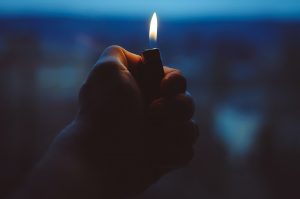Understanding Different Degrees of Burns
When considering different degrees of burns, it’s essential to remember that degrees are ranges, not precise definitions. A burn can be somewhere between a second or third-degree burn for example, and higher degree burns are frequently surrounded by lesser burns of varying degrees. Regardless, burns rarely kill on their own—most burn fatalities are caused by infection, inflammatory responses, and other burn complications. Knowing more about burns can help you handle the immediate and lasting implications of these serious injuries.
First-Degree Burns
First-degree burns are relatively harmless and superficial. Sunburns, scalds, and other burns caused by brief exposure to household objects fall into this category. When treating a first-degree burn, use a cool compress and apply antibiotic ointment periodically; pain and peeling skin are normal, but inflammation and pus are signs of infection.
However, always seek treatment for electrical burns—unlike heat burns, electrical burns can cause deep tissue and nerve damage even if they seem like a first-degree burn on the surface.
Second-Degree Burns
A burn reaches second-degree classification when it destroys the epidermis and begins to damage the dermis underneath. These types of burns cause additional pain, swelling, and redness that is distinctly darker or splotchier than the discoloration associated with first-degree burns. Second-degree burns can range from minor to severe, but should always receive medical attention. In less severe cases, these burns heal fully with antibiotic ointments and proper dressings. With more serious burns, blisters might erupt; skin grafts are sometimes necessary with these burns and scarring becomes more likely.
Third-Degree Burns

The third degree is the point at which burns become life-threatening. Third-degree burns damage the epidermis, dermis, hair follicles, and underlying tissue. The nerves in the area are frequently destroyed, creating a numb, painless wound, and skin cells are often irreparably killed, marked by a leathery, white, grey, or blackened appearance. Because the skin is no longer able to repair itself, skin grafts are always necessary, and intensive medical treatment is required to minimize the risk of infection.
Fourth-degree Burns and Above
Though less commonly discussed, degrees of burns above the third do exist. Fourth-degree burns damage the fat beneath the skin, fifth-degree burns start to damage muscle, and sixth-degree burns are more akin to incineration, burning all the way to the bone. These types of burns are less common except in prolonged fire exposure, explosions, or industrial accidents (especially involving nuclear radiation) but are extremely lethal and require extensive, immediate medical treatment in order to preserve the victim’s life. It’s not possible to salvage a body part that’s been burned so severely, so amputation is often necessary.
Compensation for Serious Burn Injuries in Arizona
Many burns are caused by the reckless negligence of others, and as such, compensation is normally attainable for victims of burns. Initial treatment, long-term hospital stays, skin grafts, therapy, and other treatment plans quickly add up to form overwhelming medical bills, but a compassionate personal injury attorney can help. If you or someone you love has suffered severe burns, contact the personal injury attorneys of ELG at (623) 321-0566 to schedule a free consultation and secure the financial compensation you deserve.
It’s important to remember that financial losses aren’t the only damages in severe burn cases. Loneliness, loss of pleasure, disfigurement and scarring, mental suffering, and other issues frequently accompany serious traumas, and while a lawyer can secure a victim compensation for that intangible suffering, that won’t necessarily treat the underlying problem. If someone you know is recovering from a serious burn injury, knowing how to support burn survivors as they recover can make a world of difference.
Law News Feed
All NewsWho Is Liable for Damages After a Truck Accident?
According to information from the National Highway Traffic Safety Association, more than 2,500 truck accidents occur each year in Arizona. It goes without sayin…
Common Injuries After a Motorcycle Accident
Motorcycle accidents kill or severely injure individuals more frequently than any other type of crash, resulting in immense amounts of suffering and financial d…

